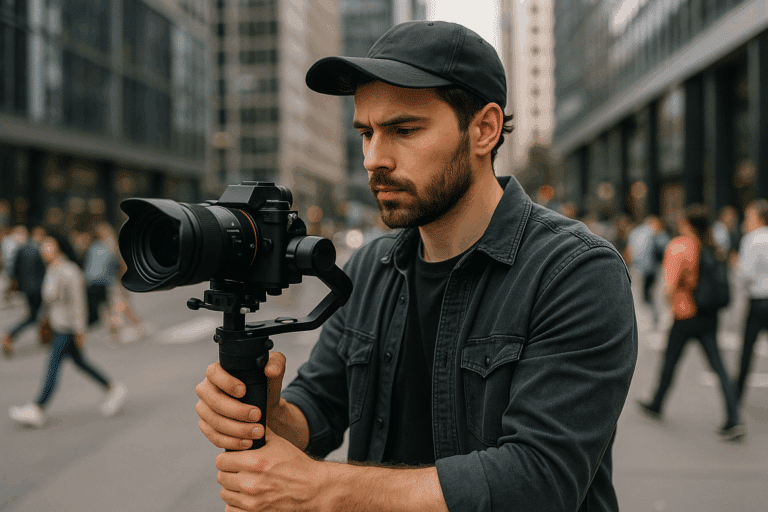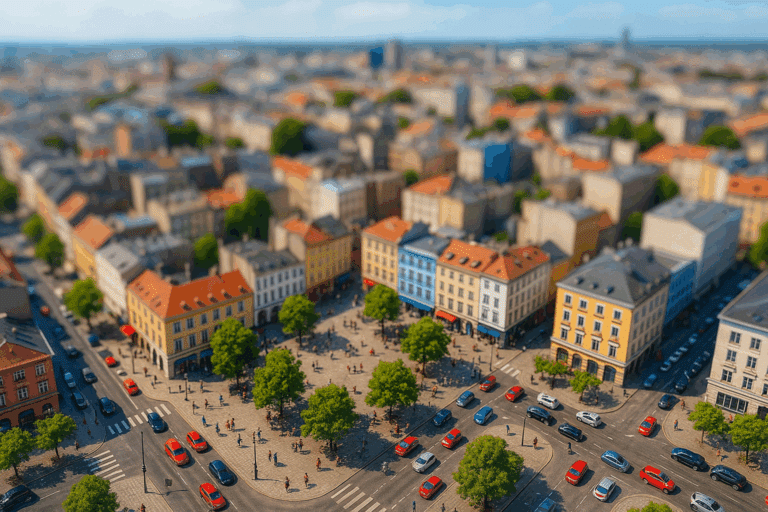Unlocking the magic of perfect portrait bokeh is an aspiration many photographers chase. The elusive balance between a sharp subject and a dreamy, out-of-focus background can transform a portrait from ordinary to breathtaking. But, what if you could achieve this stunning effect without investing in expensive gear? 📸
In this comprehensive guide, we will unveil the art and science of creating captivating bokeh with no gear needed, offering insightful tips to help you capture stunning photos without the hefty price tag. Regardless of your photographic experience or gear at hand, these techniques can enhance your creativity and expand your photographic skills. Let’s dive in! 💡
What is Portrait Bokeh? 🧐
For the uninitiated, ‘bokeh’ is a term borrowed from the Japanese word ‘boke’, which means ‘blur’. In photography, it refers to the aesthetic quality of the blur produced in the out-of-focus parts of an image. The desired bokeh effect is a soft, pleasing blur that helps the subject stand out while adding depth and a touch of artistic flair to the photograph.
In portrait photography, perfect bokeh is all about balancing focus and blur to highlight the subject and create a compelling composition. Mastering this balance requires a blend of understanding the underlying principles and implementing practical techniques, a synergy we aim to explore in this article.
Why Bokeh Matters in Portraits? 👤
In portrait photography, the aim is to draw attention to the person or people in the image. A well-executed bokeh effect can help achieve this by minimizing distractions and emphasizing the subject. The result is a photo that tells a story, evokes emotion, and captivates the viewer’s attention.
Bokeh Without the Gear: The Principle 💼
Generally, achieving bokeh requires a fast lens, with a wide aperture (low f-number) allowing a shallow depth of field. However, if you don’t have such a lens at your disposal, fear not. There are ways to create impressive bokeh effects without high-end gear. The trick lies in understanding how depth of field, distance, and light interact in photography.
In this guide, we will break down these principles and reveal actionable techniques to help you unlock the magic of perfect portrait bokeh without investing in expensive equipment.
What to Expect in this Guide 📘
This extensive guide will cover a range of topics, starting from the fundamentals of bokeh to advanced techniques for achieving this effect without expensive gear. You can expect a deep dive into understanding how bokeh works, tips on creating stunning portraits using natural light, and even how to leverage your smartphone camera for impressive results.
We will also touch on post-processing techniques for enhancing bokeh in your images, helping you make the most out of the gear you already own.
Whether you’re a seasoned professional or a budding enthusiast, this guide aims to arm you with a solid foundation and innovative strategies to capture captivating portraits without breaking the bank. Let’s unlock the magic of perfect portrait bokeh together! 🚀
Unveiling the Art of Perfect Portrait Bokeh: No Expensive Gear Required
If you’ve ever admired professional portrait photographs and wondered how the photographer achieved such a stunning background blur (aka, “bokeh”), you might be surprised to discover that expensive equipment isn’t always necessary. In fact, you can capture beautiful bokeh portraits using nothing more than your smartphone and a little knowledge of lighting and composition. In this article, we will explore the science behind bokeh, tips for achieving perfect portrait bokeh, and the best budget-friendly alternatives to expensive camera equipment.
Before we dive into the heart of the subject, I would recommend checking out the video “Mastering Portrait Photography: Create Stunning Bokeh with Basic Gear” by Photography Pro. It offers an excellent visual explanation of the concepts we’ll discuss here.
The Science Behind Bokeh
Bokeh, derived from a Japanese word meaning “blur” or “haze”, refers to the aesthetic quality of the out-of-focus areas in a photograph. The reason why some photographs have a pleasing, “creamy” background blur while others have a more “jittery”, unattractive blur has everything to do with the lens aperture.
In photography, the aperture is the opening in a camera’s lens that allows light to enter. The size of this opening is controlled by a series of blades that can be adjusted to create a larger or smaller aperture. The shape and number of these blades determine the quality of bokeh in a photograph. The more rounded the blades, the more circular the bokeh, and the smoother the background blur. Similarly, the greater the number of blades, the more pleasing the bokeh effect.
Therefore, the common belief that expensive lenses with wide apertures are necessary to achieve good bokeh is partly true. These lenses do produce beautiful bokeh, but they’re not the only option. With the right techniques and some basic equipment, you can capture equally stunning bokeh portraits.
Unlocking Perfect Portrait Bokeh: Tips & Techniques
There are several techniques you can employ to achieve desirable bokeh, even with basic gear. The first, and perhaps the most important, is to understand the relationship between distance and depth of field. The closer your subject is to the camera and the further they are from the background, the more pronounced the bokeh will be.
Another technique is to use aperture priority mode (if your camera has this feature). In this mode, you select the aperture and the camera automatically adjusts the shutter speed for correct exposure. A wider aperture (represented by a lower f-number) will yield more bokeh. However, remember that a wider aperture also narrows the depth of field, so ensure your subject is in focus.
Lastly, consider the quality and quantity of light in your scene. Bokeh is more pronounced in high-contrast situations, such as when there are bright points of light against a darker background. Experiment with different lighting conditions and watch how it impacts the bokeh in your images.
Best Budget-Friendly Alternatives to Expensive Equipment
While there’s no denying that professional camera equipment can produce stunning results, they’re not always necessary, especially when it comes to achieving bokeh. Here are some budget-friendly alternatives that you can use to create impressive bokeh effects.
- Smartphone Cameras: The latest smartphones come with advanced camera features such as dual lenses and adjustable aperture settings that can produce beautiful bokeh. Even older models often have a “portrait mode” that can simulate bokeh.
- Manual Focus Lenses: These lenses, while not offering the convenience of autofocus, often provide a better quality of bokeh due to their larger apertures and the ability to adjust focus precisely.
- Extension Tubes: These are hollow tubes that you attach between your camera body and lens to decrease the minimum focus distance, thereby increasing the bokeh effect.
It’s also worth mentioning that post-processing software like Adobe Lightroom and Photoshop can be used to enhance or even simulate bokeh, providing another affordable alternative to expensive lenses.
| Gear | Pros | Cons |
|---|---|---|
| Smartphone Cameras | Portable, often have built-in bokeh features | Limited control over settings, quality may not match DSLRs |
| Manual Focus Lenses | Better bokeh quality, precise focus control | No autofocus, may require more practice to use effectively |
| Extension Tubes | Increases bokeh effect, relatively inexpensive | Reduces light entering the camera, may affect image quality |
In conclusion, capturing stunning portrait bokeh doesn’t always require expensive equipment. With understanding of how bokeh works, knowledge of the right techniques, and some basic gear, you can create beautiful portraits that will leave viewers wondering how you did it. So, pick up your camera (or smartphone), and start exploring the magic of bokeh!
Conclusion
In conclusion, we’ve traversed a vast terrain of knowledge that encompasses the intricate and complex world of Information Technology and Engineering. A realm where the technical language could be seen as intricate as the technology itself, but hopefully, throughout this article, we’ve been able to simplify these complexities into digestible information.
We embarked on a journey through the foundational elements of IT and Engineering, shedding light on the various aspects and functionalities that are often overlooked or misunderstood. We then progressed to delve into the more intricate details, unpacking each component in a way that hopefully brought clarity and understanding. The technicalities of coding, the fundamentals of software engineering, and the increasingly important role of cybersecurity were all areas that we explored.
The world of IT and Engineering is expansive and continuously evolving, making it an exciting field for those who are passionate about technology and its application in our day to day lives. Thus, it’s critical to keep oneself updated with the latest trends and advancements. 👨💻
I sincerely hope that this article has piqued your interest and provided you with valuable insights that will aid in your professional or personal growth. Remember, in the vast realm of technology and engineering, there are always new things to discover and learn.
I encourage you to share your thoughts, perspectives, and experiences in the comment section below. Your input could provide another reader with the insight they need to unlock new understanding or solve a problem they’ve been grappling with.
If you found this article beneficial, please share it with your peers or on your social media platforms. Knowledge is most valuable when it’s shared and who knows, you may inspire someone to embark on their journey into the fascinating world of IT and Engineering.
Remember, “The science of today is the technology of tomorrow.” – Edward Teller 🌎
I recommend further reading and research on this subject. A few resources that I find particularly insightful are TechCrunch (Link) and IEEE Spectrum (Link) which provide up-to-date news and articles about the latest in technology and engineering.
Stay curious, keep learning, and until our next exploration into the world of IT and Engineering, remember: the future belongs to those who believe in the beauty of their dreams. 💫
Rodrigo Almeida, signing off.



